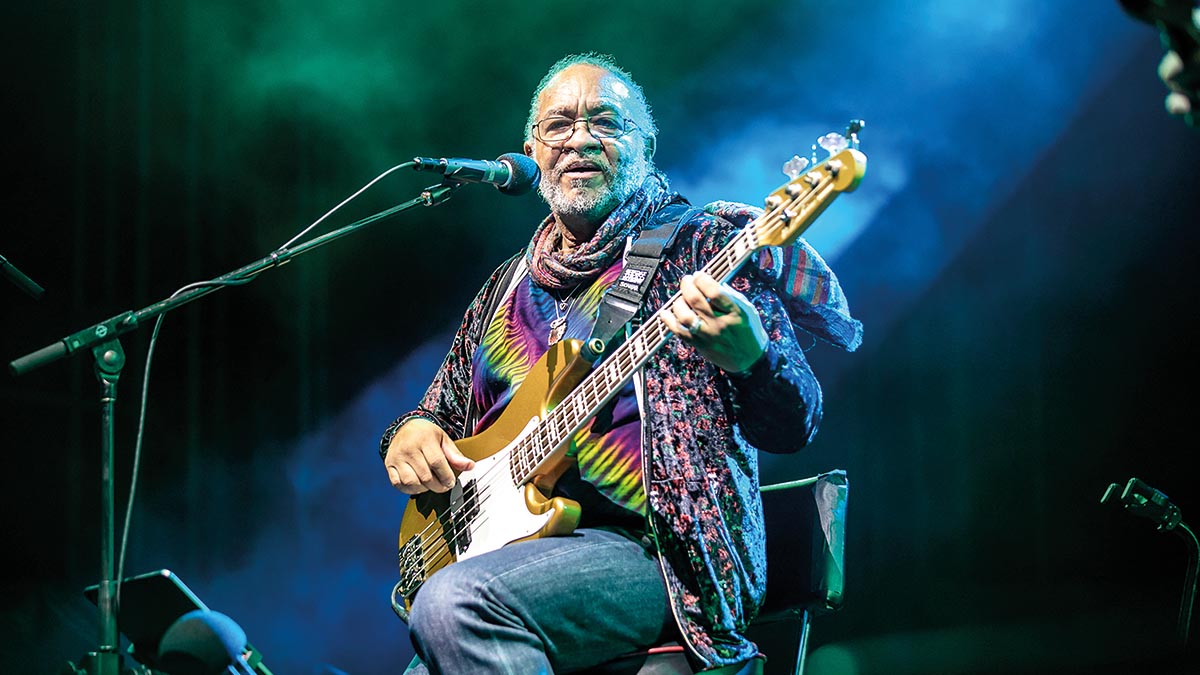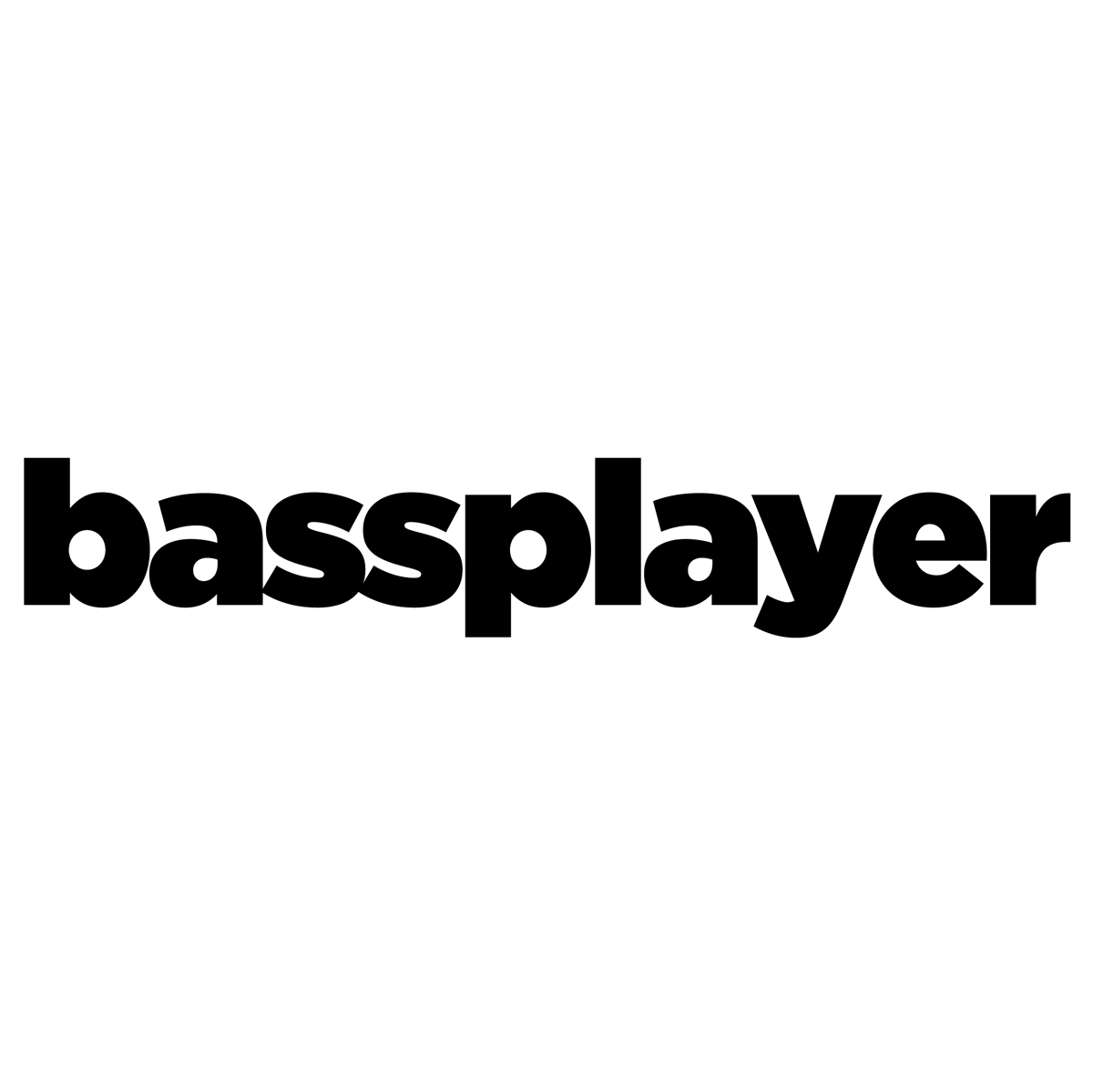The Meters’ George Porter Jr: “My note choices may have gotten better... In a trio, there’s room for me to be busier”
The funk bass legend sits down to talk about his career in low end, the bass gear that gets the job done, and the benefits of early morning recording

The funk fans among us have long been in awe of the work of George Porter Jr and The Meters, the New Orleans-based band he co-founded in 1965 with Art Neville, Leo Nocentelli, and Joseph ‘Zigaboo’ Modeliste. They’ve long been hailed alongside Sly & The Family Stone and Parliament-Funkadelic as progenitors of funk, with their signature instrumental Cissy Strut from 1969 an archetype of laid-back, effortless groove.
As well as recording their own classics, The Meters also became the house band for Allen Toussaint’s label and studio in New Orleans, backing records for a range of musicians including Dr. John, Paul McCartney, and Robert Palmer; they famously backed Patti Labelle on her 1974 hit, Lady Marmalade. Porter was later sampled by hip-hop artists such as A Tribe Called Quest, Run DMC, N.W.A. and Queen Latifah.
After the band split in 1977, he went on to play with a long list of names including David Byrne, Jimmy Buffett, Tori Amos, Taj Mahal, John Scofield, Warren Haynes, and members of the Grateful Dead.
Now 70, Porter has two bands, the Runnin’ Pardners and a self-titled Trio, the former of which returns this year with a new album, the aptly-titled Crying For Hope. As he remarks in the liner notes, “Grateful that during this tough time something this good could happen.”
Congratulations on the new record, Mr Porter.
“Thank you. Seven of those songs were actually written in the early mornings, when I would get up and put my dog out. Those basslines came out when I was waiting for her to come back.”
You had just woken up when you were playing those parts?
Get The Pick Newsletter
All the latest guitar news, interviews, lessons, reviews, deals and more, direct to your inbox!
“Yeah. I’d wander down the stairs, get a dish of food for her and put it down, and she’d eat it and then go outside. I went and grabbed a bass and fooled around with it for a couple of minutes.
“I remembered some of the parts from a dream – I would wake up humming that groove – so I’d grab the bass and play it. I’d go back to bed and sleep till 10 o’clock, and then I’d get up and turn the phone on and listen to the voice memo that I recorded the bass on. That’s how a lot of it went down, this time.”
What was the bass gear you were using?
“I’m using two basses on this record – the original Lakland bass that Dan Lakin custom-built for me just before he left the company, and then for the second half of the session, I used a D. Lakin bass, which is his version of the original P-Bass design.”
I can hear envelope filters on there.
“There’s definitely envelope filters, made by EBS – a good company. Bass Player magazine gave me a Lifetime Achievement Award in 2016 at the Bass Player Live! event, and I met the EBS guys there. The envelope filter is called the Unichorus, and I use their octaver, the Octabass, on one of the tracks.”
When you play live, do you include the classic Meters songs in your set?
“I did an album in 2011 called Can’t Beat The Funk, where I recorded 16 songs by The Meters that were never played live by the band. I play those songs pretty regularly in my set, and I have a version of Cissy Strut that is basically a 12-bar blues, and every now and then People Say and No More Okey Doke make it into the set.”
I ask because I’m interested to know if, when it comes to the older tunes, you play the bass parts as they were originally recorded.
“Absolutely not. I don’t know how they were played back then, haha! You know, I like the aggressiveness of Runnin’ Pardners and The Porter Trio, so when we play those songs, we expand on them and play with them. We want to let them let them breathe more – you know, open them up.”
How are you changing as a bass player as the years pass?
“That’s a great question. I don’t really know how that evolution is working. I believe I’m still learning, but I definitely like where I’m at. My note choices may have gotten better. I may have gotten busier at times. For years and years, my motto was ‘It’s not what you play, it’s what you don’t play’ – but in a trio, as you know, there’s room for me to be busier.
“Since I’ve been doing a bunch of songs with Grateful Dead players, and bands that invite me to play Grateful Dead kind of music, I’ve been a little busier, because that’s what the music requires. It’s not like I’ve totally abandoned my old motto, though.”
How did you get started on bass?
“I started out as a classical guitar player. I studied that instrument for two and a half years. I wasn’t a lead guitar player, I was a rhythm guitar player, and there was no need for rhythm guitar players – so I moved over to playing bass because there was a need for electric bass players at the time.
I realized that I was a bass player when Art Neville hired me to play bass – because he had previously told me that I was the worst guitar player he had ever heard
“My friend Benjamin Francis, who I call Papi, was very instrumental in me acquiring my bass identity – learning a real formula for playing bass. Over the years, I evolved because that’s what I was supposed to do. If there wasn’t a need for bass players, I would probably have tried to stick at playing guitar, because I love playing guitar.
Which bass players did you admire?
“Well, Papi thought that George French was the guy. I got to meet George much later, maybe 15 years later, and I realized that George was what Papi always said he was. He was a gentleman of bass players – a wonderful player. There was a few local bass players that I liked, but for me, it was the records that I heard – and the records that I listened to had George French all over them.”
When did you realize that you had become a successful bass player?
“I guess I realized that I was a bass player when Art Neville hired me to play bass – because he had previously told me that I was the worst guitar player he had ever heard, haha!”
Art passed away in 2019. What kind of man was he?
“He was difficult, but he befriended me as a young man, and I looked up to him, so I was able to look past those moments that might have been difficult for other people to see past. For the most part, I can actually say that I really loved Art Neville.”
What’s next for you?
“Well, the future holds two projects, one of which is to finish the Porter Trio record. I’ve also asked some young songwriters and singers that I know around town to work on a record, with just my bass, guitar and their vocals. That’s going to be challenging, I know, because a lot of singers lean towards their vocals being around certain chord formulas. Not giving them those chord formulas is going to be the challenging thing – but I’m thinking that these people are well versed in singing, so I think we can make it work.”
- Crying For Hope is out now via Controlled Substance Sound Labs.
Bass Player is the world’s most comprehensive, trusted and insightful bass publication for passionate bassists and active musicians of all ages. Whatever your ability, BP has the interviews, reviews and lessons that will make you a better bass player. We go behind the scenes with bass manufacturers, ask a stellar crew of bass players for their advice, and bring you insights into pretty much every style of bass playing that exists, from reggae to jazz to metal and beyond. The gear we review ranges from the affordable to the upmarket and we maximise the opportunity to evolve our playing with the best teachers on the planet.
“I asked him to get me four bass strings because I only had a $29 guitar from Sears”: Bootsy Collins is one of the all-time bass greats, but he started out on guitar. Here’s the sole reason why he switched
“I got that bass for $50 off this coke dealer. I don’t know what Jaco did to it, but he totally messed up the insides!” How Cro-Mags’ Harley Flanagan went from buying a Jaco Pastorius bass on the street to fronting one of hardcore’s most influential bands











